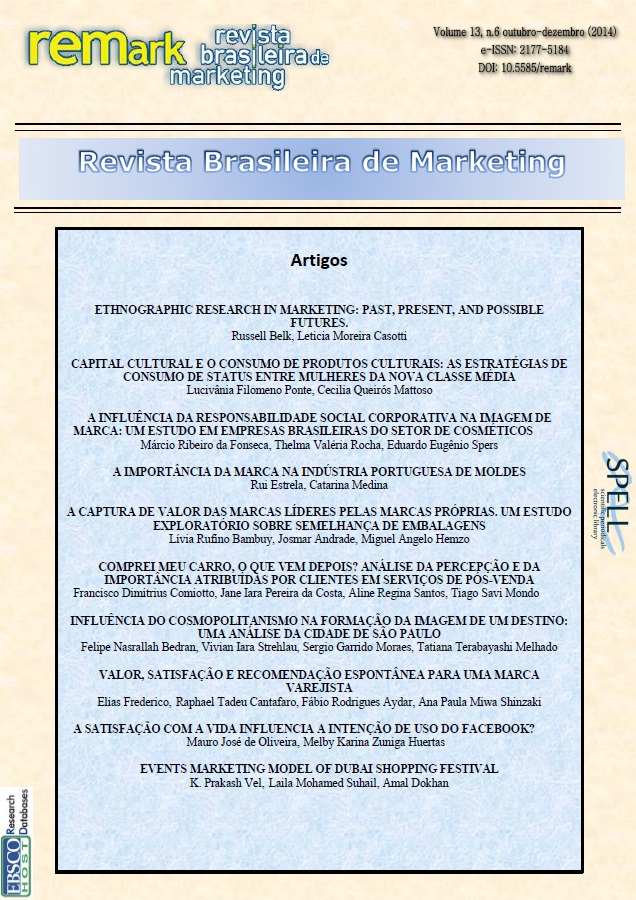I Bought my Car, What’s Next? Perception and Importance Analysis Attributed by Costumers to After Sales Services
DOI:
https://doi.org/10.5585/remark.v13i6.2575Keywords:
After-sales, Car Dealers, Relationship.Abstract
The objective of this research is analyzing the consumer perception and importance gave to after-sales service strategies at the car dealers market, in Florianópolis, SC. The study arose from a curiosity to discover if after-sales practices would be associated to a product/service or to a consumer, as well as how do consumers evaluate those practices. In order to, an exploratory descriptive and quantitative was made, by applying a survey with 400 vehicles owners of brands JAC, GM, Fiat and Toyota. Results points that consumers firstly associate after-sales practices to services/product aspects (31,4% associate to maintenance review) and then to consumer relationship (9,8% associate to complaining channels). Besides, some practices are perceived as high importance, although demonstrate low satisfaction – for example the “quick response to complaining” (high importance issue to 66%, but low satisfaction to 62%) and “equal treatment during all consumption process” (high importance issue to 62%, but low satisfaction to equals 62%). The study also shows that consumers perceive differently after-sales treatment from those made on purchase moment. This statement is based on 2,15 media, the lowest among the analyzed variables, with standard deviation of 0,759 and negative asymmetry of -0,249. The present research rises questioning about after-sales importance on both relationship to consumer and loyalty. Besides, incite a deep look to aftersales theme, both on academicals and managerial environment.Downloads
Downloads
Published
2014-12-23
How to Cite
Comiotto, F. D., Costa, J. I. P. da, Santos, A. R., & Mondo, T. S. (2014). I Bought my Car, What’s Next? Perception and Importance Analysis Attributed by Costumers to After Sales Services. ReMark - Revista Brasileira De Marketing, 13(6), 80–93. https://doi.org/10.5585/remark.v13i6.2575
Issue
Section
Articles
Views
- Abstract 387
- PDF (Português (Brasil)) 369









